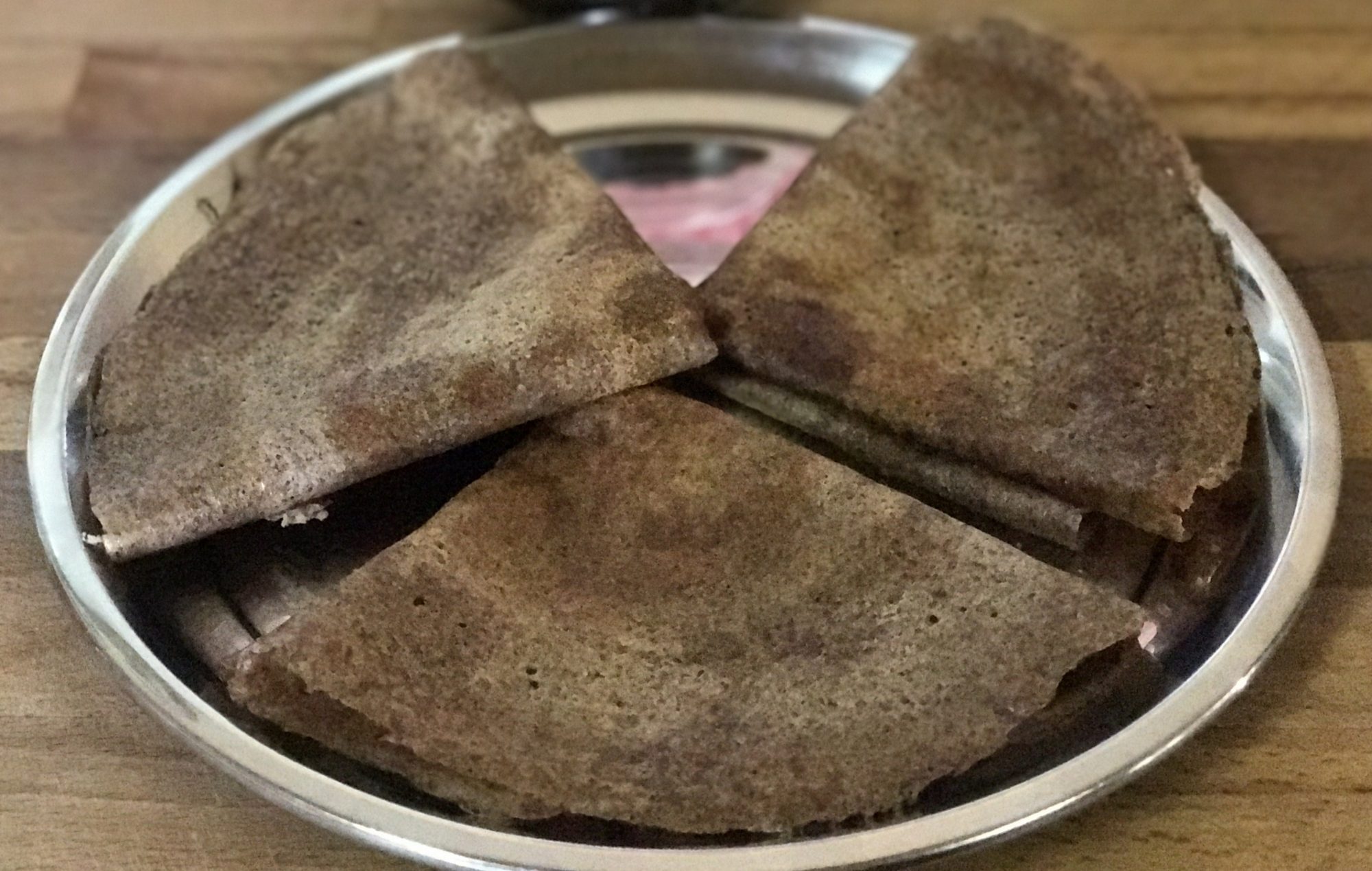Kollu Dosai/Horsegram Dosai

Horsegram has wonderful health benefits in reduction of cholesterol levels and aids as a relaxant during chilly cold weather and cold related ailments.
Different foods are prepared with Kollu, in different parts of India. In the south of India, Kollu Rasam (spicy soup), Kollu Paruppu (cooked lentil curry) are a few delicacies.
The most favourite and tastiest usage of Kollu might be the Horsegram Pancakes. They have an exclusive flavour and crispness unlike other millet based dosais. There is an important difference though. All other millets are replacements to rice and are hence used instead of rice. Here, Kollu or Horsegram is a lentil and is placed instead of black gram and is combined with Rice.
Horse gram can best be considered a reddish brown legume that is full of numerous health advantages. It can benefit with a number of health issues since it is a grain that contains a good as well as rich quantity of vitamins, proteins, as well as iron. Along with weight loss, it will help in lowering of excess fat through the body. Horse gram is full of B-complex vitamin and proteins. It will help in purifying menstruation as well as cures and helps prevent arthritis. The existence of adequate dietary fiber within the gram will help balance sugar glucose as well as blood pressure levels.Listed here are some health advantages related to horse gram. https://www.healthbenefitstimes.com/health-benefits-of-horse-gram/
The heat that Kollu produces in the body after consumption is something to be taken note of. Since it is a high heat-producing food, it is combined with rice which goes smooth on the system. Additionally, rice aids in easy digestion of Horsegram too. To tackle the heat of the lentil, thuvayal or chutneys made with shallots or tomatoes are a great choice.
Kollu Dosai is preferably a breakfast meal. All millet based/lintel based pancakes are suitably taken for breakfast to aid in easy digestion. One has to keep in mind that, all high fibre, power packed pancakes are low in calories compared to plain rice or wheat based foods, yet they take longer to break up in the digestive tract, which makes them more suitable as breakfast foods.
Kollu Dosai/Horsegram Dosai
comes out really crisp
Ingredients
- idli Arisi/idlis rice – 2 cups
- kollu Paruppu/Horsegram – 1 cup
- vendhayam/fenugreek seeds. 1/2 tsp
- kal Uppu/rock salt – ½ tsp
Method of Preparation
Making batter-
the light foamy paste is proof of light weighted idlies or dosais, exclusive to kollu
- Wash well idli rice and kollu/horse gram separately.
- Add fenugreek seeds to washed horse gram
- Soak both idli rice and horse gram overnight or minimum 6 hours in water in different utensils .
- Grind separately like the normal idli batter in a grinder or any blender. The stone grinder brings a beautiful foamy batter out of soaked horsegram.
- Once ground into a fine batter add rock salt and mix well or grind the rock salt in the end.
- Leave the batter overnight or until fermented well.
- Dosai batter is ready for use.
Making Dosai-
- Heat dosaikal or the pancake pan on stove
- Pour a ladle of batter and spread into perfect round pancakes – preferably thin
- Pour droplets of gingelly oil on the sides of the Dosai for easy lift of pancake
- Turn the Dosai to the other side and let it cook
- Take out once done- remember it would take just about 30-50 seconds to cook a side of thin Dosai. If one keeps it longer, the texture of pancake would be lost.
- Enjoy Kollu Dosai with any Thuvayal/chutney.
- Have a glass of Mor or Buttermilk that cools the system and aids in digestion.
Buttermilk: always to be had with Kollu Dosai
Take 1/4 glass of thick yoghurt, 3/4 glass of water, salt, fenugreek powder, asafoetida and blend well to a smooth liquid. This is the basic buttermilk. Buttermilk can be made flavourful with addition of coriander leaves, curry leaves, green chillies, mint leaves and so on. Feel free to add your own flavourful agents.




























